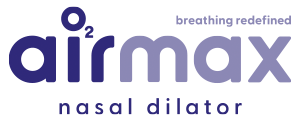67% of patients were willing to continue using a nasal dilator after trying for a period of 4 weeks
Source reference
Garyfalia Lekakis, Emely Dekimpe, Brecht Steelant, Peter W. Hellings, 2016.
Managing nasal valve compromised patients with nasal dilators: objective vs subjective parameters
Background
Patients suffering from nasal obstruction due to nasal valve compromise may benefit from a nasal dilator. Several devices for widening of the external/internal nasal valve region can be applied endonasal (Airmax®, Nasanita®, Nozovent®) or externally (Breathe Right®).
Methodology
100 patients suffering from nasal obstruction due to external or internal nasal valve compromise were involved in this study. All patients were evaluated for nasal obstruction with visual analogue scores (VAS) and peak nasal inspiratory flow (PNIF) measurements before and after the application of 4 nasal dilators. They were offered to choose 2 out of 4 for a trial period of 1 month. Subsequently, patients were reassessed and asked about their willingness to continue using the dilators, as well as the reasons for discontinuation.
Results
There was a significant decrease of VAS scores and improvement in PNIF with the dilators in situ compared to baseline. After 4 weeks, 67% of the patients were willing to continue using at least one of the chosen dilators. The reasons for discontinuation were local irritation, inappropriate fit, preference for a permanent solution like surgery, and no relief of symptoms.
Conclusion
Nasal dilators represent a valuable option in the therapeutic approach of nasal valve compromise, with endonasal dilators achieving higher increase in PNIF in comparison with external nasal dilators.
